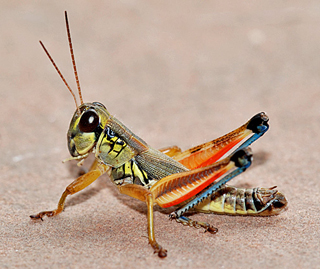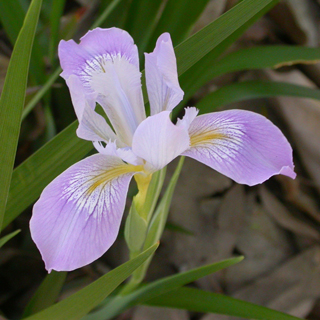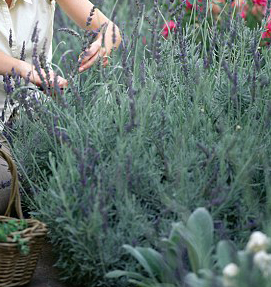 Now this month is a tale about the ‘Battle of the Acres’. Or more clearly Nine Acres v Four Acres. And it is a tale from last year but worth telling here. Joyce is quite properly very proud of her garden and works hard in it despite the other calls on her time. Only the other day she was buying compost, rushing off to play bowls and was sure she would ’meet herself coming back.’
Now this month is a tale about the ‘Battle of the Acres’. Or more clearly Nine Acres v Four Acres. And it is a tale from last year but worth telling here. Joyce is quite properly very proud of her garden and works hard in it despite the other calls on her time. Only the other day she was buying compost, rushing off to play bowls and was sure she would ’meet herself coming back.’
On a well – earned Sunday afternoon off she came over to me in the pub and firmly suggested that I might like to write about a problem that was troubling her in the garden. Not snails or pigeons but thistles. ‘Coming up all over the place’ she said, ‘from Nine Acres!’(A field in Veryan)( Four Acres a residential road adjacent)
Now rather than taking this at face value I thought a little investigation was called for and I immediately collared Mr Harrison and said what’s this about your thistles in Nine Acres drifting into Four Acres? (I am so impressed with the simplicity of Cornish field names! I have just renamed one of mine in modern vernacular ‘5.408 hectares’!).
Of course the answer I received was not as simple as Mr Harrison leaving his field fallow and untended. His thistles were ‘special’, (his would be!) a natural consequence of a very complicated scheme. Read on Joyce, this puts thistles and Mr Harrison’s husbandry in perspective, though may not reduce your weeding!
 Until September 2011, Nine Acres was an arable field. This meant lots of ploughing, tilling, seeding and harvesting with the necessary heavy modern machinery. Therefore it was discussed with English Heritage and Natural England that at the top of Nine Acres this constant working of the ground may be disturbing the earth works for the old castle.
Until September 2011, Nine Acres was an arable field. This meant lots of ploughing, tilling, seeding and harvesting with the necessary heavy modern machinery. Therefore it was discussed with English Heritage and Natural England that at the top of Nine Acres this constant working of the ground may be disturbing the earth works for the old castle.
It was therefore agreed that the field would be sown with low input grasses, (i.e. they need no chemical fertilisers or control), which consisted of three varieties of fescues and crested dog tail and this would also encourage some natural regeneration of annual meadow grass. Therefore the first consequence is no disturbance to the castle earth works and second consequence, the encouragement of an open sward of grasses attracting invertebrates like grasshoppers.
 The third consequence is that the habitat is then perfect for the cirl bunting. Now the unfortunate fourth consequence is that not only does the cirl bunting turn up but so too the sow thistle, which has ample room to multiply. In every year previously it has been possible to apply an appropriate approved control for the thistles to prevent flowering but the very cold spring made this impossible, allowing the thistles to thrive and so they took time to die and what will be forever known as ‘the fifth consequence’ is that they saw Joyce’s garden as the perfect setting in which to deposit their offspring.
The third consequence is that the habitat is then perfect for the cirl bunting. Now the unfortunate fourth consequence is that not only does the cirl bunting turn up but so too the sow thistle, which has ample room to multiply. In every year previously it has been possible to apply an appropriate approved control for the thistles to prevent flowering but the very cold spring made this impossible, allowing the thistles to thrive and so they took time to die and what will be forever known as ‘the fifth consequence’ is that they saw Joyce’s garden as the perfect setting in which to deposit their offspring.
I did a little research on the cirl bunting which was once widespread throughout southern England. It is apparently not now considered to be a finch but looks like one (bird families are almost as complicated as plant families!) but is closely related to the yellow hammer and until recently could only be found in south Devon where coastal farming practice allowed its survival.
The dramatic decline in numbers was due to habitat loss resulting in there being only 118 pairs in 1989. During the winter, cirl bunting forage in weedy stubble fields. In summer they nest in hedges and forage in the said unimproved grassland for invertebrates. Grasshoppers are the best food for the young buntings and that is what Mr Harrison is supplying in abundance.
 It follows that he used to produce wheat and now he breeds grasshoppers. That’s diversification for you! But cirl buntings are not keen travellers and only move about 2km between their breeding and wintering areas (obviously brighter than your average swallow!) so it is vital that these feeding areas are close to each other.
It follows that he used to produce wheat and now he breeds grasshoppers. That’s diversification for you! But cirl buntings are not keen travellers and only move about 2km between their breeding and wintering areas (obviously brighter than your average swallow!) so it is vital that these feeding areas are close to each other.
The stewardship schemes that have encouraged the grassland protection meant that by 2003 those 118 pairs had increased to 700 pairs and by 2009, 862 pairs. More information can be found at www.rspb.org.uk. Of course there is another consequence which another farmer noticed locally and that is the increase in sparrow hawks which consider the cirl bunting a delicacy. Oh dear, the food chain is perplexing.
But, at the end of June the RSPB announced record numbers of cirl buntings in Devon where stewardship schemes are definitely working. No doubt that’s why the EU wants to change the rules….
With profuse apologies to the Editor for straying off my subject somewhat here are the jobs for July in your garden [apology accepted. Ed.]:
* Irises are fabulous plants with little or no pests or disease. Cut off the old flower spike lift the clump and divide or cut up the rhizomes to create new plants.
* Cut back perennials that have flowered, they may do it all over again. Just watch that leaves are still appearing at the base, if not then they are the wrong sort to cut back. Penstemons and perennial wall flowers don’t like it but most herbaceous plants do.
 * Cut lavender back as soon as it has finished flowering, if you leave it until spring and we have a mild winter you may cut off the flowering stems.
* Cut lavender back as soon as it has finished flowering, if you leave it until spring and we have a mild winter you may cut off the flowering stems.
* Clematis that flower before the end of June need cutting back now and so too all plants that have flowered now. Try a few clematis cuttings.
* Take soft tip cuttings of shrubs and flowers. Take a cutting about 4” long; remove the lower leaves and insert, with or without rooting powder into a small pot, around the edge. Nobody knows why round the edge works better than in the middle.
* Look out for bugs in the greenhouse and tomato and cucumber disorders. Feed tomatoes and cucumbers at least once a week, they are working hard now.
* Sow beetroot for bay beets in autumn, so too carrots. Turnips are also quick to mature if sown this month.
* Sow lettuces; try mizuna, peppery and delicious!
* Keep picking vegetable produce. It’s the old rule once you let anything set seed it thinks it has done its job. Pick peas beans strawberries and other soft fruit.
* Keep weeding as weeds go to seed particularly quickly with warm wet conditions. Pull perennial weeds like nettle and thistle…
And the resolution to the Battle of the Acres? Well, there are more thistles than ever this year so I have suggested they go halves on a donkey.

